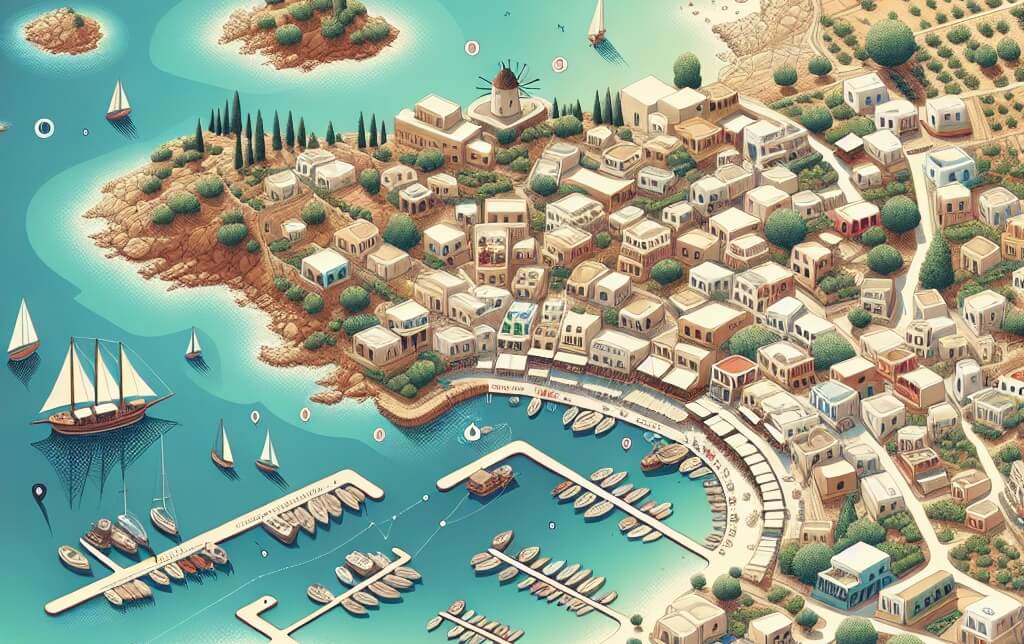
Turtle Island Greece Halkidiki: Explore the Stunning Nature
Turtle Island in Greece's Halkidiki region offers a unique opportunity to immerse oneself in the stunning nature of this coastal paradise. Situated in the crystal-clear waters of the Aegean Sea, Turtle Island is a haven for nature enthusiasts and adventure seekers alike. Visitors can explore the island's pristine beaches, lush forests, and diverse wildlife, including the endangered loggerhead sea turtles that nest on its shores. Whether hiking through scenic trails, snorkeling in the vibrant underwater world, or simply relaxing on the sandy beaches, Turtle Island promises an unforgettable experience in harmony with nature's beauty.
I. Introduction
In recent years, Turtle Island in Greece's Halkidiki region has garnered attention for its unique ecological significance and natural beauty. Situated off the coast of Sithonia, Turtle Island serves as a vital nesting ground for endangered loggerhead sea turtles, attracting conservation efforts and eco-tourism initiatives. This pristine island, with its crystal-clear waters and unspoiled beaches, offers a sanctuary for both wildlife and visitors seeking a tranquil escape. As concerns about environmental conservation and sustainable tourism grow, Turtle Island stands as a beacon of hope, showcasing the importance of preserving delicate ecosystems for future generations to enjoy and protect.
II. Geographical Features
The geographical features of Turtle Island in Halkidiki, Greece, are characterized by its pristine beaches, crystal clear waters, and lush greenery. Situated in the Aegean Sea, Turtle Island boasts a rugged coastline with rocky cliffs and hidden coves, providing a picturesque backdrop for visitors to explore. The island's diverse landscape includes sandy beaches perfect for sunbathing and swimming, as well as dense forests and rolling hills ideal for hiking and nature walks. With its unique blend of natural beauty and tranquility, Turtle Island offers a peaceful retreat for those seeking to immerse themselves in the stunning surroundings of Halkidiki.
III. Fauna and Flora
In the region of halkidiki in greece, commonly referred to as Turtle Island, the fauna and flora exhibit a rich and diverse ecosystem. The marine life surrounding the island includes various species of fish, sea turtles, and other aquatic creatures, making it a popular destination for snorkeling and diving enthusiasts. On the island itself, the flora consists of lush vegetation, including olive trees, pine forests, and a variety of Mediterranean plants. The presence of such diverse fauna and flora not only enhances the natural beauty of Turtle Island but also contributes to the overall ecological balance of the region.
IV. History and Culture
IV. History and Culture of Turtle Island in Greece's Halkidiki region is rich and diverse. The island, also known as Amouliani, has a fascinating history that dates back to ancient times. It has been inhabited by various civilizations, including the ancient Greeks, Romans, and Byzantines, each leaving their mark on the island's culture and architecture. The local culture of Turtle Island is a blend of traditional Greek customs and modern influences, creating a unique and vibrant atmosphere for visitors to explore. Additionally, the island's natural beauty and pristine beaches have attracted tourists and historians alike, making it a popular destination for those seeking a glimpse into Greece's rich history and culture.
V. Tourism and Recreation
Tourism and recreation play a significant role in the allure of Turtle Island, located in Halkidiki, Greece. The island's pristine beaches, crystal-clear waters, and diverse marine life attract visitors seeking a tranquil and scenic escape. Tourists can engage in a variety of recreational activities such as snorkeling, diving, and boat tours to explore the rich underwater ecosystem surrounding the island. Additionally, the island offers opportunities for relaxation and rejuvenation, with luxury accommodations and wellness facilities available for visitors to unwind and recharge. The tourism industry on Turtle Island contributes to the local economy and provides employment opportunities, while also promoting environmental conservation efforts to preserve the island's natural beauty for future generations to enjoy.
VI. Environmental Conservation
VI. Environmental conservation is a critical component of the preservation efforts on Turtle Island, located in Greece's Halkidiki region. The unique ecosystem of this island, characterized by its diverse marine life and pristine beaches, must be safeguarded through sustainable practices and conservation initiatives. By minimizing pollution, protecting endangered species, and promoting responsible tourism, the delicate balance of the island's environment can be maintained for future generations to enjoy. It is imperative that all stakeholders, including local authorities, businesses, and visitors, work together to ensure the long-term sustainability of Turtle Island's natural resources.
VII. Conclusion
In conclusion, the Turtle Island in Halkidiki, Greece is a remarkable destination that offers a unique and immersive experience for nature enthusiasts and adventure seekers. With its pristine beaches, crystal-clear waters, and diverse marine life, Turtle Island provides a sanctuary for sea turtles and other wildlife. Visitors to this tranquil paradise can partake in various activities such as snorkeling, diving, and exploring the lush landscapes surrounding the island. The conservation efforts in place to protect the delicate ecosystem of Turtle Island are commendable, ensuring that future generations can continue to appreciate its beauty and biodiversity. Overall, a visit to Turtle Island in Halkidiki is a truly unforgettable and enriching experience for those seeking to connect with nature and explore the wonders of the underwater world.









